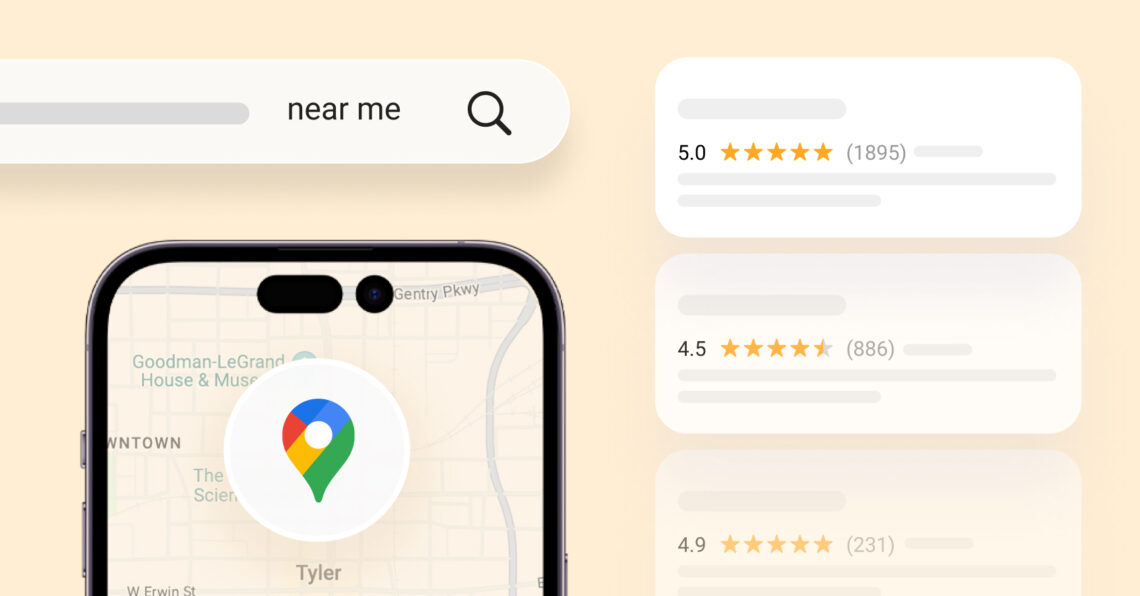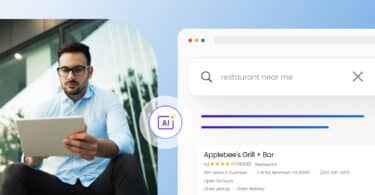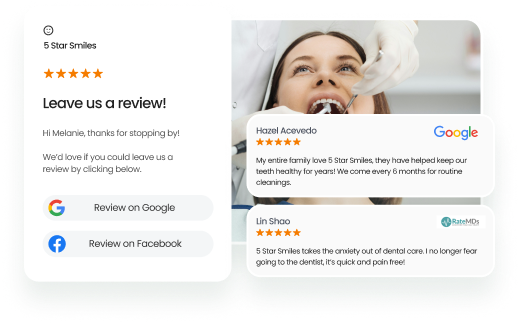Multi-location businesses aiming for online visibility and enhanced online reputation have an undeniable starting point – Google Maps SEO. Most potential customers start their journey of discovering local businesses on Google, and the number of these searches is only increasing year on year.
Ranking higher on the Google Local Map pack improves click-through rates, enhances brand recognition, drives higher foot traffic, and accelerates business growth.
However, mastering local SEO can be a significant challenge, especially for those managing multiple locations on Google Maps. That is why we bring you the top expert-recommended Google Maps SEO strategies tailored for multi-location businesses.
Let’s get right to it.
Table of contents
- What is Google Maps SEO?
- Why multi-location businesses must prioritize Google Maps SEO in 2026
- How Google Maps ranks business listings (Updated for 2026)
- Top 18 Google Maps SEO strategies for multi-location businesses
- AI-driven SEO: How Birdeye helps multi-location businesses scale
- Update, optimize, and monitor business listings to rank higher on Google Maps
- FAQs about Google Maps SEO
- Rank higher on Google with Birdeye
What is Google Maps SEO?
Google Maps SEO is optimizing your business profile to achieve a higher ranking in Google Maps search results and the coveted local 3-pack (aka the local pack).
Unlike traditional search engine optimization (SEO), which focuses on ranking a website in Google’s organic listings, SEO for Google Maps specifically helps businesses appear in Google Maps, including the Google Maps app, and location-based search results on Google.
While single-location businesses only need to focus on optimizing one Google Business Profile, multi-location businesses face added complexity. Every branch, store, or office must maintain accurate information, engage with local audiences, and build trust with potential customers in each service area.
But here’s the kicker: Without proper Google Maps SEO, even a nationally recognized brand can lose out to competitors dominating the local pack in specific regions.
Why multi-location businesses must prioritize Google Maps SEO in 2026
In 2026, Google Maps is no longer just a navigation tool—it’s a powerful engine for discovery, engagement, and trust-building. For multi-location businesses, it play a pivotal role in connecting with local audiences across every branch or region.
Here is how ranking higher on Google helps businesses:
- 90% of customers read upwards of two reviews before choosing a business, and almost 80% of online reviews are on Google.
- The Google Maps app and local pack now occupy prime real estate in mobile and voice searches, making it essential to be visible in these search results.
- Multi-location brands face more friction, including duplicate listings, inconsistent business hours, and fragmented NAP (Name, Address, Phone) details across locations, leading to lower rankings.
Multi-location challenge:
Imagine a retailer with 80 locations. If 20 of those business profiles show outdated hours or missing categories, it directly hurts their ability to rank across those markets.
Pro Tip: Multi-location businesses should monitor Google Maps listings health at scale using automation tools like Birdeye Listings to optimize every business profile.
How Google Maps ranks business listings (Updated for 2026)
Google’s local ranking algorithm hinges on three core factors—Relevance, Distance, and Prominence—but these take on new meaning in a multi-location environment.
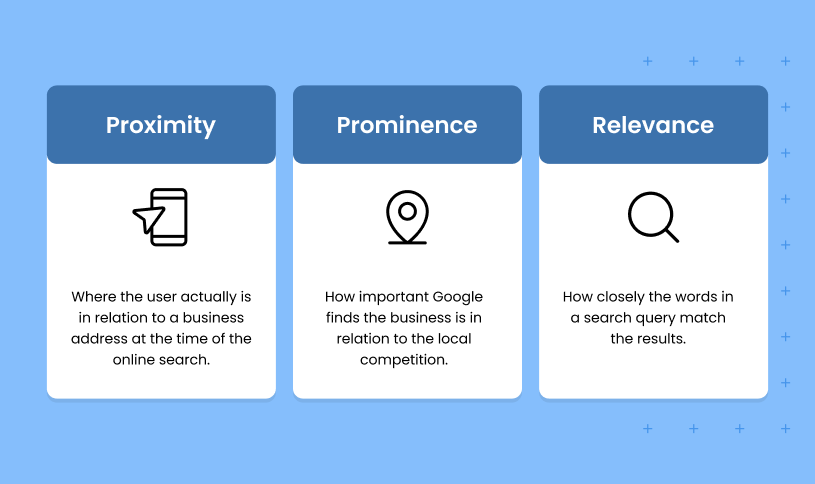
- Relevance: How well does your business profile match the local search results intent? Your business description, categories, and services should align with local keywords and specific services at each location. A nationwide dental chain should localize the description to say “Pediatric Dentist in Plano, TX,” vs. using a generic “Dentist” tag across all branches.
- Distance: Google prioritizes business locations closest to the searcher’s physical location. Multi-location brands should leverage service area fields (in the GBP dashboard) to cover surrounding neighborhoods.
- Prominence: This factor is influenced by Google reviews (volume and sentiment), consistency across business information (NAP), and behavioral signals like clicks, calls, and driving direction requests.
Top 18 Google Maps SEO strategies for multi-location businesses
Optimizing your Google Maps presence across dozens (or hundreds) of business locations isn’t just about visibility—it’s about building trust, driving conversions, and owning your service areas.
Here are the most essential Google Maps SEO strategies, fully tailored for multi-location businesses aiming to scale with consistency, clarity, and credibility:
- Maintain NAP consistency across all locations
- Claim and verify your Google business profiles
- Localize and optimize business descriptions
- Choose accurate and search-relevant categories
- Optimize key business information on Google Maps listings
- Upload location-specific photos to Google Maps
- Manage Google reviews across locations
- Define and promote service areas
- Enable and manage Q&A for Google Maps business listing
- Add attributes to your business listing
- Embed Google Maps to your website
- Publish local content regularly
- Build location-specific landing pages
- Strengthen your backlink profile
- Implement local business schema on your website
- Improve behavioral signals
- Leverage user-generated content on Google Maps
- Track and analyze Google Maps performance across locations
Let’s explore each strategy in detail.
1. Maintain NAP (Name, Address, and Phone number) consistency across all locations
When your business name, phone number, or business address varies across listings, Google may view them as separate entities, impacting local search performance. And that is why it is essential to maintain NAP consistency across:
- Google Business Profiles
- Location landing pages
- Online directories (Yelp, Apple Maps, Bing, etc.)
- Social media accounts
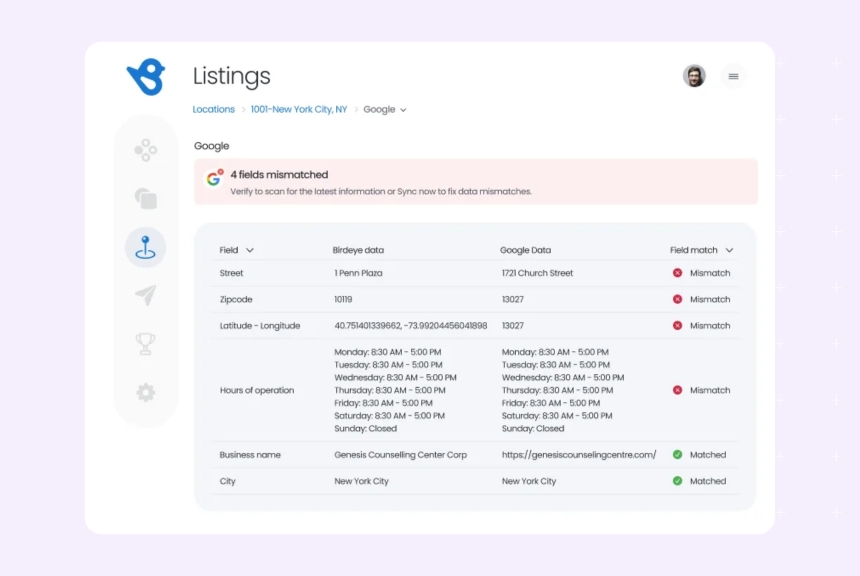
Challenge: Multi-location businesses have trouble keeping track of all location mentions across directories, making it difficult to enforce consistency.
Solution: Use a citation tracker or a listing management tool like Birdeye Listings AI to scan the major directories and listing sites for mentions and upload consistent information across locations.
Example: Foundation Partners Group standardized NAP across 250 locations and saw a measurable lift in Maps visibility and discovery searches.
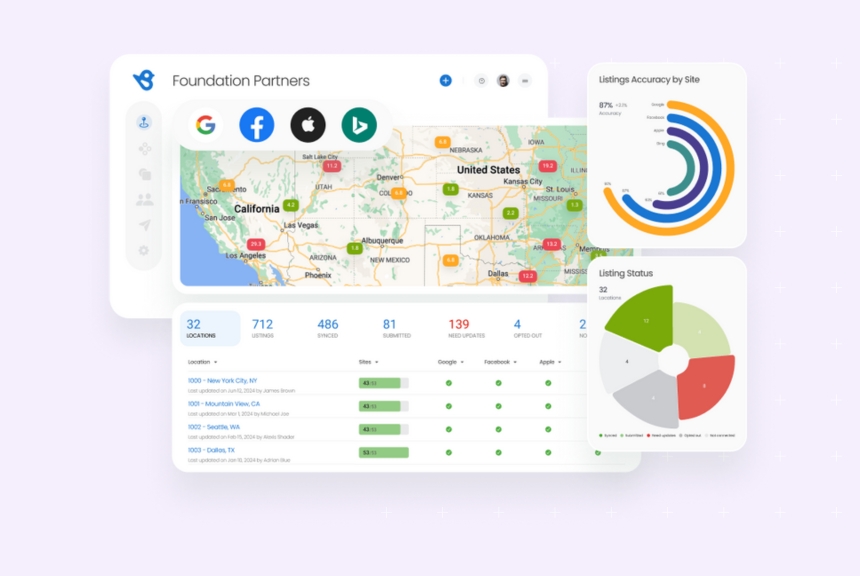
“Birdeye became our source of truth for online profiles. With hundreds of locations to manage, it allowed us to ensure accurate and consistent information across all platforms, saving us significant time and effort.”
Gwen Salaza, Director of Field Marketing, Foundation Partners Group
2. Claim and verify your Google Business Profiles
Birdeye studies on Google business profile show that businesses on Google Maps with verified profiles see higher engagement across phone calls, direction requests, and website visits.
Claiming and verifying your Google business profile also allows you to optimize key business information, manage reviews, and strengthen your overall brand presence on Google. Unverified listings are less likely to rank and may display incorrect data.
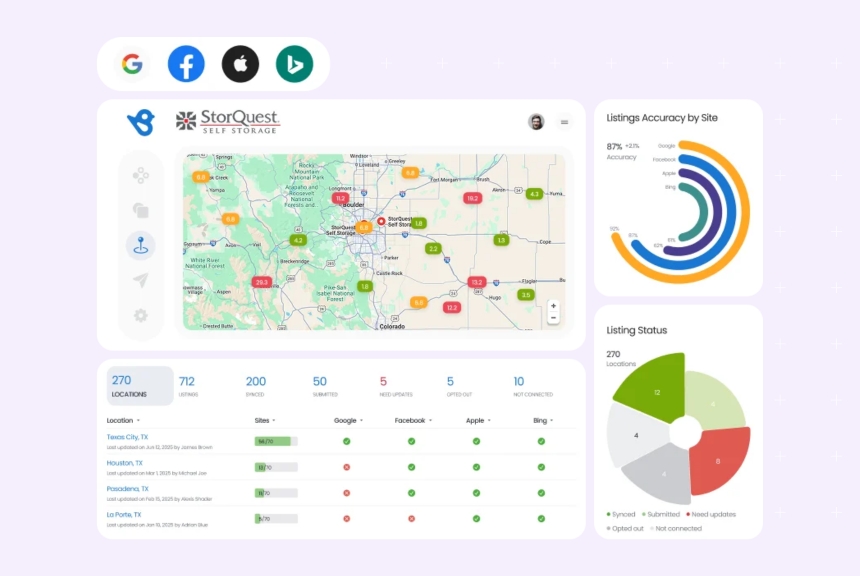
To do this, businesses can:
- Search for individual locations on Google
- Claim any existing listing or require a transfer of ownership if necessary
- Verify using a postcard, email, or phone with proof of ownership documents
Multi-location businesses can streamline this process using the Google Business Profile Manager dashboard or a listing management tool.
3. Localize and optimize business descriptions
Local business descriptions improve relevance by matching location-specific queries. Boilerplate descriptions miss keywords and geographic context that drive local discovery.
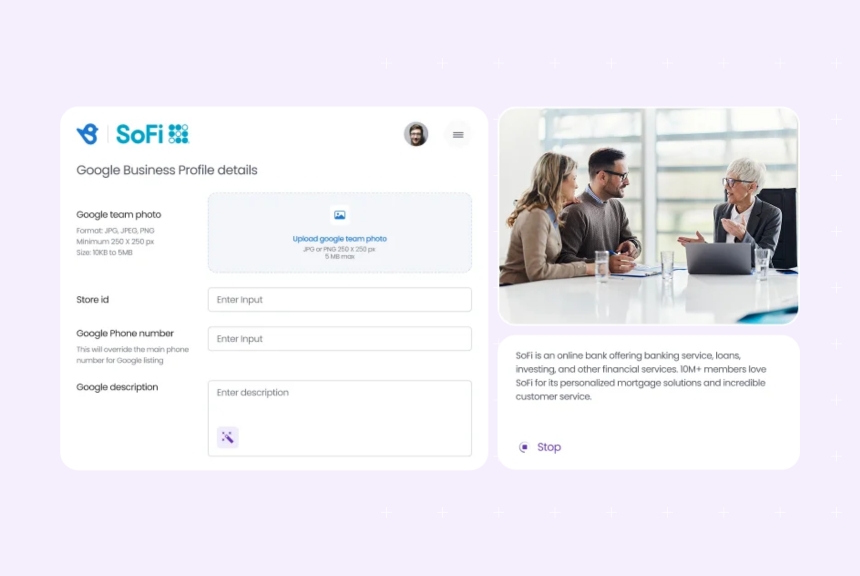
Instead of using a single corporate boilerplate, businesses should:
- Customize the business description in each listing using local keywords (e.g., “cosmetic dentist in Austin”)
- Mention neighborhoods, landmarks, or local services
- Include unique selling points per location
This boosts your relevance signal in Google’s algorithm and makes your listing more engaging for customers in that area.
Coming up with SEO-friendly business descriptions for 100+ locations can be a challenge. However, businesses can use Birdeye’s AI-generated listing descriptions that use local keywords, adhere to brand voice, and generate attractive business descriptions with a single click.
4. Choose accurate and search-relevant categories
Categories play a significant role in how Google ranks your listing. Get this wrong, and you’ll appear in irrelevant searches—or not at all. While it is tempting to use categories that best describe your business, it may not always be the right choice.
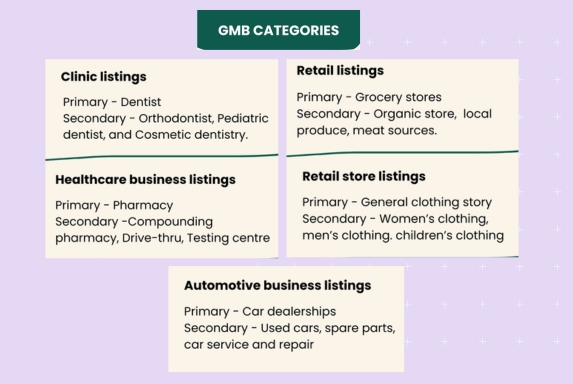
To boost your chance of ranking higher on local search results,
- Choose a location-specific primary category (e.g., “Urgent Care Center” instead of just “Doctor”)
- Add supporting secondary categories relevant to services
- Audit competing business listings to analyze what categories they have chosen and ranked for
- Monitor local search keywords to identify the most-searched category and the categories that bring you the highest traffic
5. Optimize key business information on Google Maps listings
Google prioritizes listings that are filled out and regularly updated. Complete and accurate profiles improve user trust and algorithmic ranking by seamlessly establishing trust and relevance.
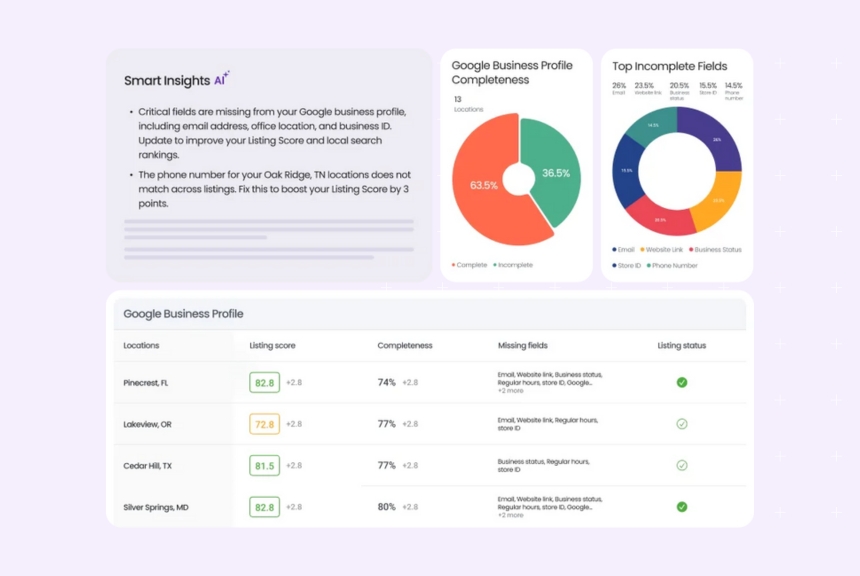
Every business listing must maintain consistent information across the following:
- Business name (matching brand guidelines)
- Business hours (including memorable/holiday hours)
- Phone number (preferably a local phone number for each location)
- Business address (or define a service area where applicable)
- Business description with local keywords and long tail keywords
- Primary category + secondary categories tailored to each location’s offering
Here is how you can update and optimize business information from the Google business profile dashboard:
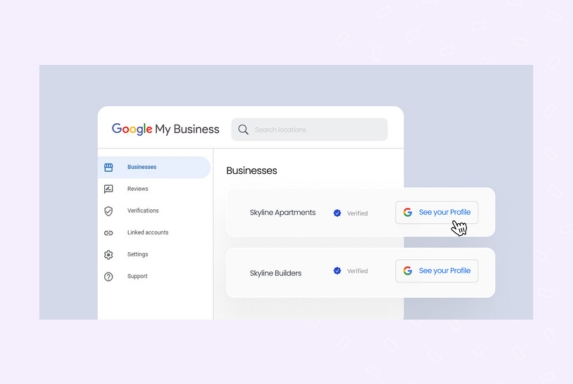
- Login to your Google business account
- Click on the app launcher icon and choose “Google Business Profile Manager.”
- Choose the business profile you wish to optimize.
- Next, click “Edit information” on the dashboard.
- Fill and optimize relevant information surrounding NAP, business hours, services, categories, business descriptions, and more.
6. Upload location-specific photos to Google Maps
Photos significantly increase user engagement and trust. Google favors listings with recent, high-quality photos, which signal active business presence and improve CTRs. While images are good, stock images rarely move the needle.
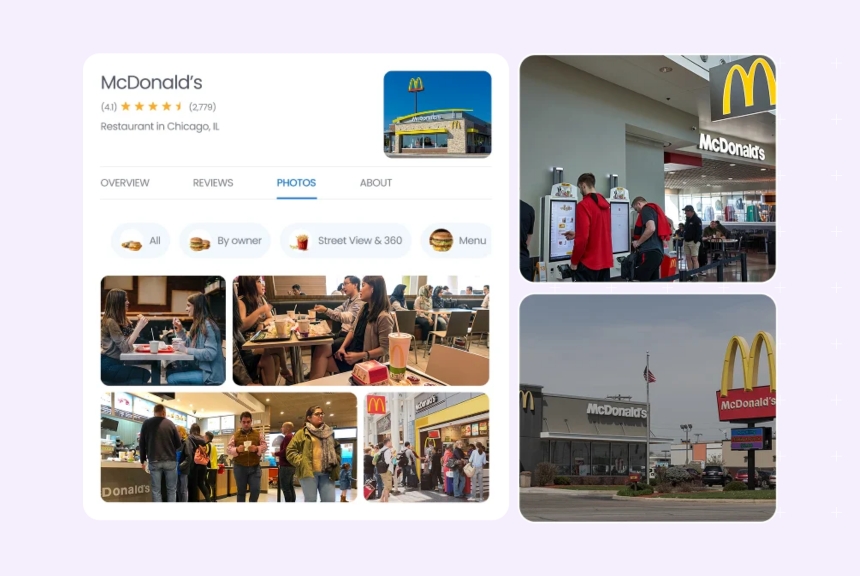
For best results, local business profiles must:
- Upload high-quality photos of each physical location, storefront, team, and service area.
- Keep visuals geo-tagged where possible.
- Add photographs of storefronts, interiors, staff, and signage.
- Upload 5–10 photos per location.
- Update Google business photos monthly to show freshness.
- Add video walkthroughs if possible.
- Encourage user-generated images, especially for restaurants, real estate, and retail businesses.
7. Manage Google reviews across locations
Reviews directly impact your Google Maps ranking and customer trust—but managing them at scale is where many businesses fail.
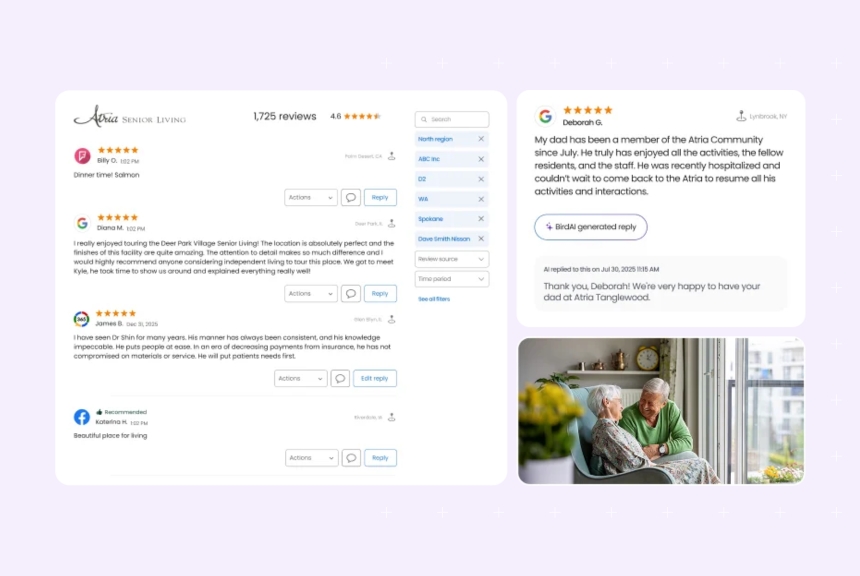
Here is how you can make the most of reviews for your business listing:
- Generate more reviews: Automate review requests post-service via text or email and ensure you ask for reviews per location, not at the brand level.
- Respond to all reviews: Acknowledge positive reviews with gratitude and personalization while also addressing negative reviews constructively to show responsiveness
- Mention services and locations in your responses: This boosts relevance and reinforces your products and services. For example, you can always say, “Thank you for choosing our Boston dental clinic for your Invisalign treatment!”
- Monitor trends with AI: Use tools like Birdeye Insights AI to track sentiment by location and uncover patterns across your network. Know which branches need improvement or are excelling in customer satisfaction.
8. Define and promote service areas
Properly configured service areas ensure you appear in searches in your accurate coverage zones. Incorrectly hiding your address or misrepresenting service areas can reduce search visibility.
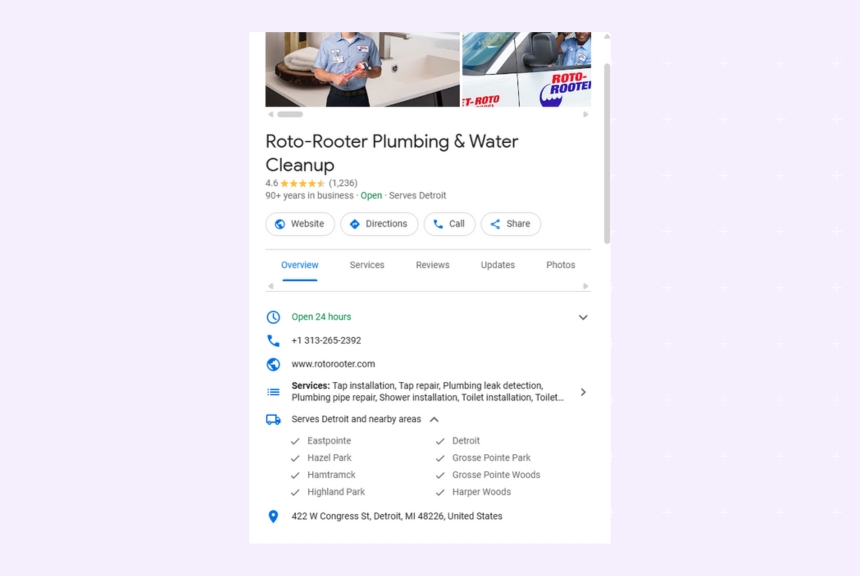
If you don’t have a storefront (e.g., mobile services or in-home services):
- Use the “service area” setting in your GBP dashboard.
- Hide the business address if you’re a service area business (SAB) without hiding your business’s physical location. This helps Google evaluate your relevance to a search query.
Service areas can also help brick-and-mortar businesses attract new clients and expand their Google business profile reach. For example, if you offer services relevant to a nearby locality, updating service areas will boost your visibility in local business searches outside of your immediate radius.
9. Enable and manage Q&A for Google Maps business listing
Google’s Q&A section is indexed and may appear in search results. Accurate, well-managed Q&As improve user experience and reduce misinformation. It also boosts engagement rates for your profile, signaling a strong interest from customers to Google.
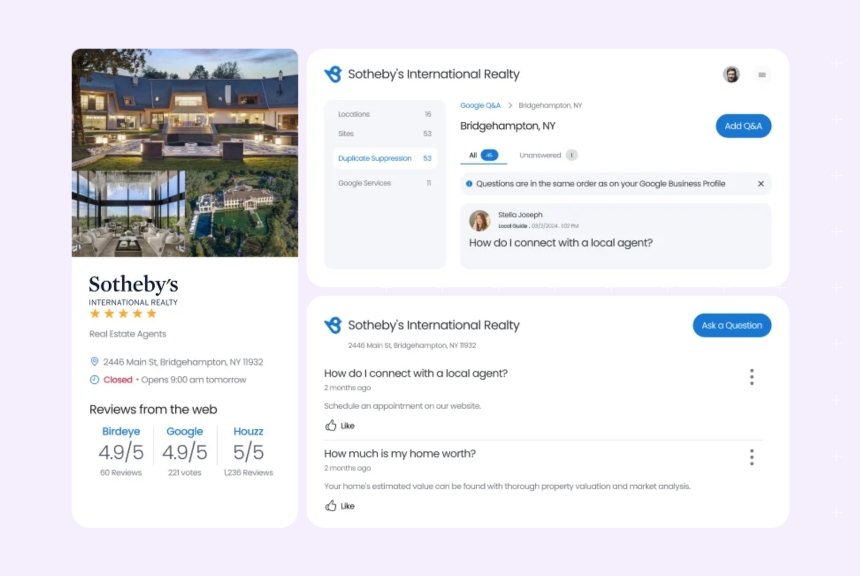
Here is how businesses can make the most of Q&A to rank higher on Google Maps:
- Seed common questions (e.g., parking availability, services) and provide clear answers.
- Monitor regularly to avoid misinformation. Clarify instantly if you spot any.
- Answer questions promptly, not allowing other Google users to step in.
10. Add attributes to your business listings
Adding attributes and other special features is another opportunity to showcase your unique selling points to Google and potential customers. Most local business searches also center around attributes like
- Wifi-access cafes around me
- Wheelchair accessible clinics
- Family-friendly restaurants
- 24-hour storage facility
- Women-lead medical spas
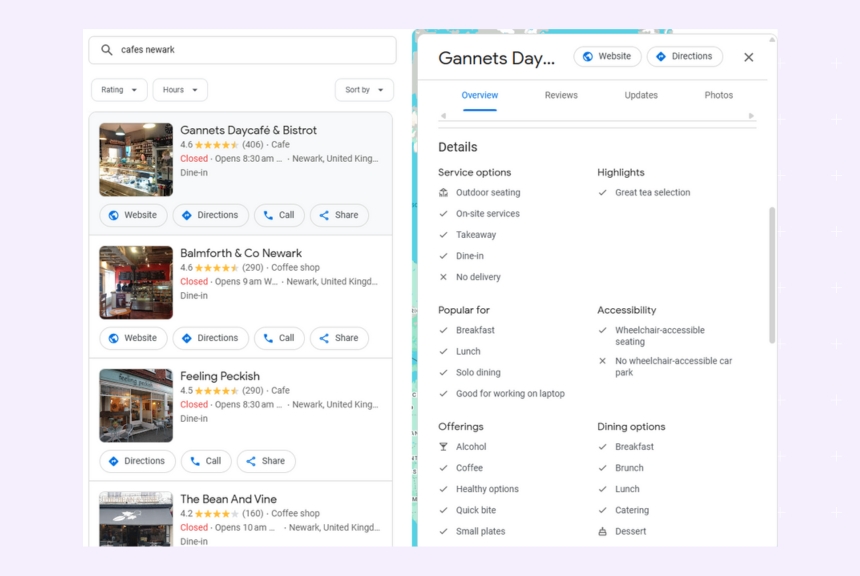
Adding these attributes to your Google business listing ensures that Google picks up the information and showcases your business on Google search results. This provides a clear advantage to your business and helps you rank higher.
Pro Tip: Monitor competitive listings to see their attributes that can help you make strategic business decisions and improve your reach on Google amongst the target audience.
11. Embed a Google Map on your website
Embedded maps reinforce geographic context to Google and make it easier for customers to navigate to your location. This improves user experience and sends strong trust and relevance signals.
Also, web pages with embedded maps earn higher engagement and time-on-page metrics—factors that indirectly help with SEO.
Here is how you can leverage this strategy to the fullest:
- Add embedded Google Maps for each location on respective landing pages.
- Include direct links to your Google Maps listings to boost engagement and rank higher signals.
- Include NAP info next to the map for added context
- Place the map prominently on the page and link to the local Google business listing directly underneath it.
Embedding Google Maps business listings on their website can drive organic traffic to your profile, encouraging Google to rank you higher for relevant local searches.
12. Publish local content regularly
Regular posts show your business is active and engaged. They improve CTR, increase engagement, and provide fresh content signals that help with SEO.
Seeing fresh posts on your Google business listing lets potential customers know about your business, the latest information, discounts, and more.
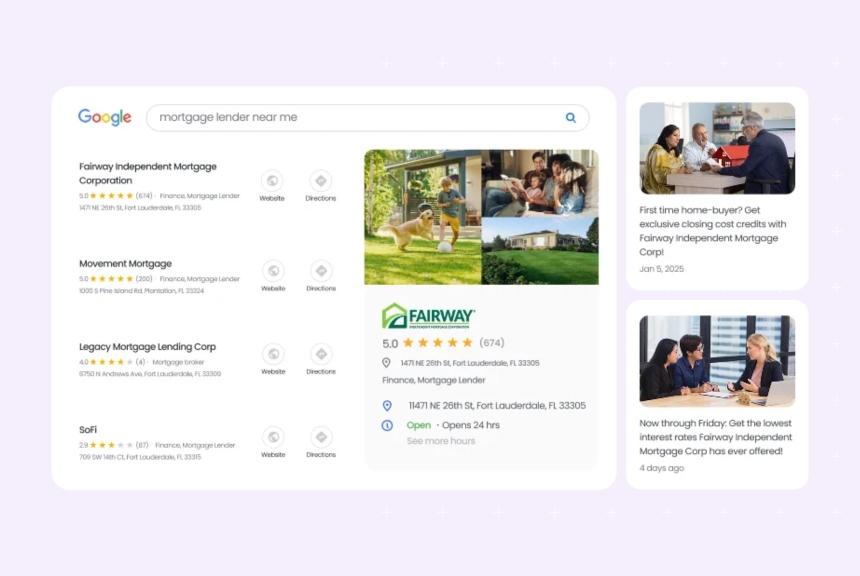
Here is how you can upload local content to your Google business listing:
- Log in to the GBP dashboard.
- Use the Posts tab to add new offers or updates by choosing the relevant categories.
- Click Confirm.
For best results, we recommend:
- Cross-posting your social media content to your Google business listings
- Maintaining a consistent posting schedule with at least two posts per week
- Customizing the content according to the local audience requirements
Pro Tip: Schedule and bulk-publish across all locations via Birdeye Social AI to increase engagement and maintain freshness.
13. Build location-specific landing pages for each business location
Localized pages provide geo-specific signals to Google, increasing visibility in target areas. They also help convert local traffic by speaking directly to a local audience. Here is how you can leverage localized landing pages:
- Create individual landing pages on your website for every branch or location.
- Connect the location-specific landing page to the appropriate local business listing.
- Include local keywords, location-specific content, and customer testimonials relevant to the local audience.
- Add local reviews to the respective landing page to boost trust and strengthen the local reputation
14. Strengthen your backlink profile
Local backlinks validate your authority in specific markets. Without them, your site lacks trust signals for geographic relevance. Here is how you can make the most of it:
- Acquire local backlinks from chambers of commerce, community websites, and partnerships with local organizations.
- Build links directly to each location’s landing page—not just your homepage.
Pro Tip: Prioritize backlinks from regionally relevant websites to boost prominence and relevance for that specific location.
Rank higher on Google Maps with Birdeye
Want to see the impact of Birdeye on your business? Watch the Free Demo Now.
15. Implement local business schema markup
Schema helps Google understand and display your business info accurately in search results. Local schema per location boosts Maps visibility and rich result eligibility.
All local businesses must:
- Use LocalBusiness schema for each location’s landing page to help Google understand key business information (e.g., business name, business address, phone number, operating hours).
- Ensure the schema is unique to each business location.
16. Improve behavioral signals
User interactions like calls, direction clicks, and website visits are behavioral signals that influence local rankings. Optimizing CTAs increases these interactions.
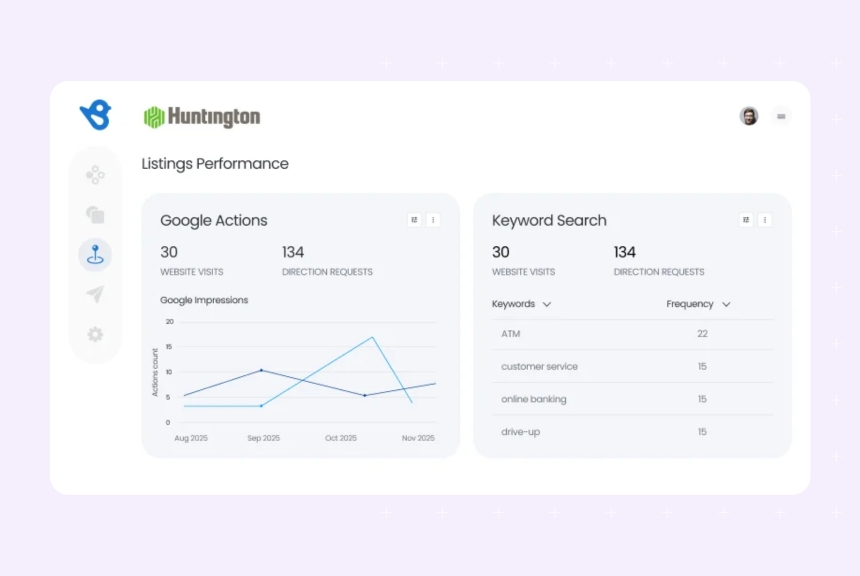
Here is what individual local business managers must ensure
- Optimize CTAs on landing pages for phone calls, directions, or appointment bookings.
- Encourage interactions by adding Posts, Q&A, and reviews. The more users interact with your listing (clicks, calls, directions), the stronger your behavioral signals for ranking higher.
Pro Tip: Include action-oriented buttons on your website and GBP, such as “Call Now,” “Get Directions,” or “Book Appointment.”
17. Leverage user-generated content (UGC)
Potential customers trust what your other customers say rather than what is on the branded website. And that is why user-generated content such as reviews, posts, and testimonials go a long way in establishing social proof.
The more user-generated content you have on Google Maps, the higher your engagement rates will be, boosting a positive signal in the platform’s algorithm.
To ensure you rank higher on Google:
- Encourage customers to upload photos and videos via Google reviews.
- Respond to all customer reviews to showcase your gratitude and commitment to customer experience management.
- Repost reviews and testimonials on social media channels, encouraging other customers to join the conversation.
18. Track and analyze Google Maps’ performance
Without tracking performance, you can’t identify which locations need attention or where competitors are outranking you. Competitive benchmarking supports ongoing growth strategy and helps you tweak local search techniques.
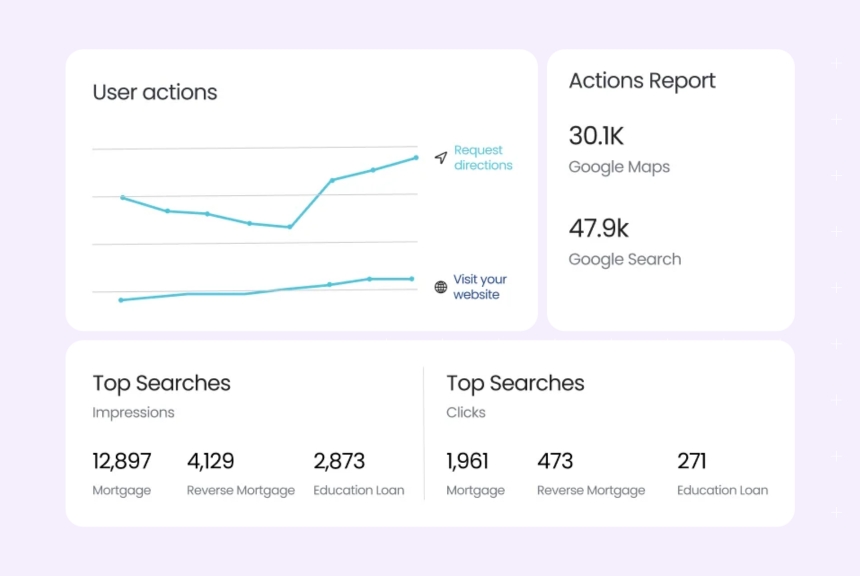
Businesses must ensure that they track:
- Listing performance at the location level and a comparative analysis amongst locations to identify patterns.
- Reviews at the local level to monitor review volume, star ratings, and overall customer sentiment.
- Local and global competitors to identify strengths, weaknesses, opportunities, and threats.
- Brand reputation health constantly to spot any potential issues.
AI-driven SEO: How Birdeye helps multi-location businesses scale
Scaling Google Maps SEO across dozens—or hundreds—of locations is no small feat. This is where Birdeye’s GenAI-powered platform works as one of the best Google Maps SEO services helps multi-location businesses thrive.
1. Automate listing optimization with Birdeye Listings
- Instantly sync and update business information (NAP, descriptions, categories, etc.) across 50+ directories and your Google Maps listings.
- Eliminate inconsistencies that hurt your visibility in the local pack.
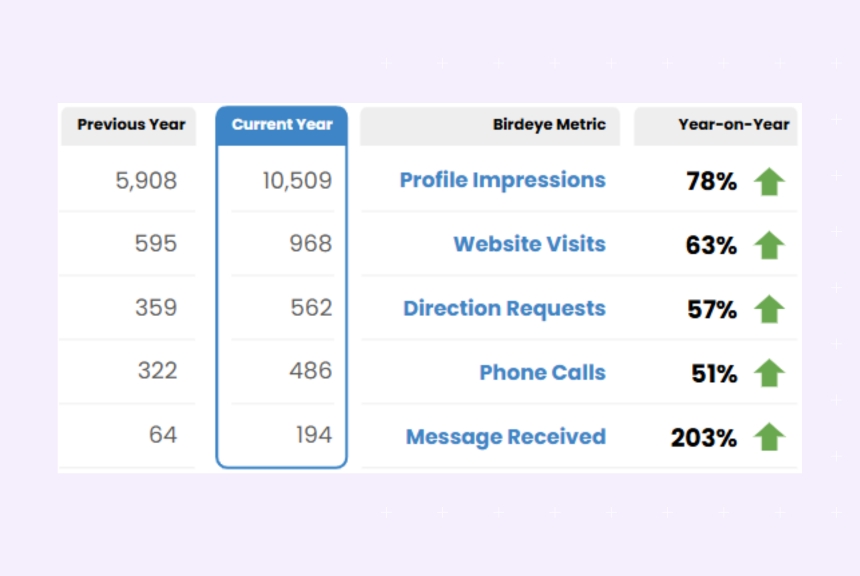
Example: Sydney Academy of Sport improved GBP listing accuracy across all service areas using Birdeye, increasing Google business profile interactions by over 50% in twelve months.
2. Supercharge review management with Birdeye Reviews + Insights AI
- Automate Google review requests and responses and escalate issues flagged by sentiment analysis.
- Analyze customer feedback trends for each business location with Insights AI to improve service delivery and reputation.
3. Benchmark competitors with Birdeye Competitors’ AI
- Track how competitors rank in Google Maps across regions.
- Use Birdeye’s insights to identify service areas or markets where competitors outperform you—and adapt quickly.
4. Monitor performance and generate custom reports
- Use Birdeye Reports to track ranking higher trends, customer engagement (e.g., phone calls, clicks), and location-specific SEO health.
- Share executive-ready reports to showcase ROI.
Update, optimize, and monitor business listings to rank higher on Google Maps
To succeed with Google Maps SEO in 2026, businesses must treat their listings as living assets—not set-it-and-forget-it entries. Regularly updating your business profiles, optimizing them with location-specific content, and monitoring performance are critical to sustained visibility.
Multi-location businesses especially need automated tools to manage listings, reviews, and competitor benchmarking at scale. By combining tactical consistency with strategic insight, your brand can move from being listed to being chosen.
With platforms like Birdeye, you not only stay compliant and complete—you gain the edge to outrank competitors and turn Maps visibility into measurable business growth.
FAQs about Google Maps SEO
Yes, Google Maps SEO involves optimizing your Google Business Profile and online presence to improve your ranking in Google Maps and the local pack.
Focus on accurate listings, NAP consistency, regular review generation, optimized landing pages, and active engagement on your Google Maps listings.
Yes. By improving your Google Maps SEO, you increase visibility, attract more foot traffic, generate phone calls, and drive conversions—all of which boost revenue.
Start by optimizing your Google Business Profiles, acquiring local backlinks, improving reviews, publishing localized content, and leveraging tools like Birdeye to scale across multiple locations.
Multi-location brands must juggle consistency and hyper-local relevance across all locations, requiring robust platforms like Birdeye to automate processes and monitor performance.
Rank higher on Google with Birdeye
Managing SEO for Google Maps across multiple locations is time-consuming, error-prone, and difficult to scale. Birdeye solves this by giving you a centralized platform to update, optimize, and monitor every business listing while improving local visibility and customer engagement.
With Birdeye, you can:
- Instantly update NAP, categories, and descriptions across 50+ directories with Listing AI
- Automate review requests and analyze sentiment trends by location with Reviews AI
- Benchmark rankings and reputation against rivals and industry standards with Competitors’ AI
- Track performance, identify gaps, and showcase ROI with executive-ready insights
- Gain a comprehensive view of business performance across sentiment, reputation, and listing with Insights AI
Watch a free demo to learn more.

Originally published
